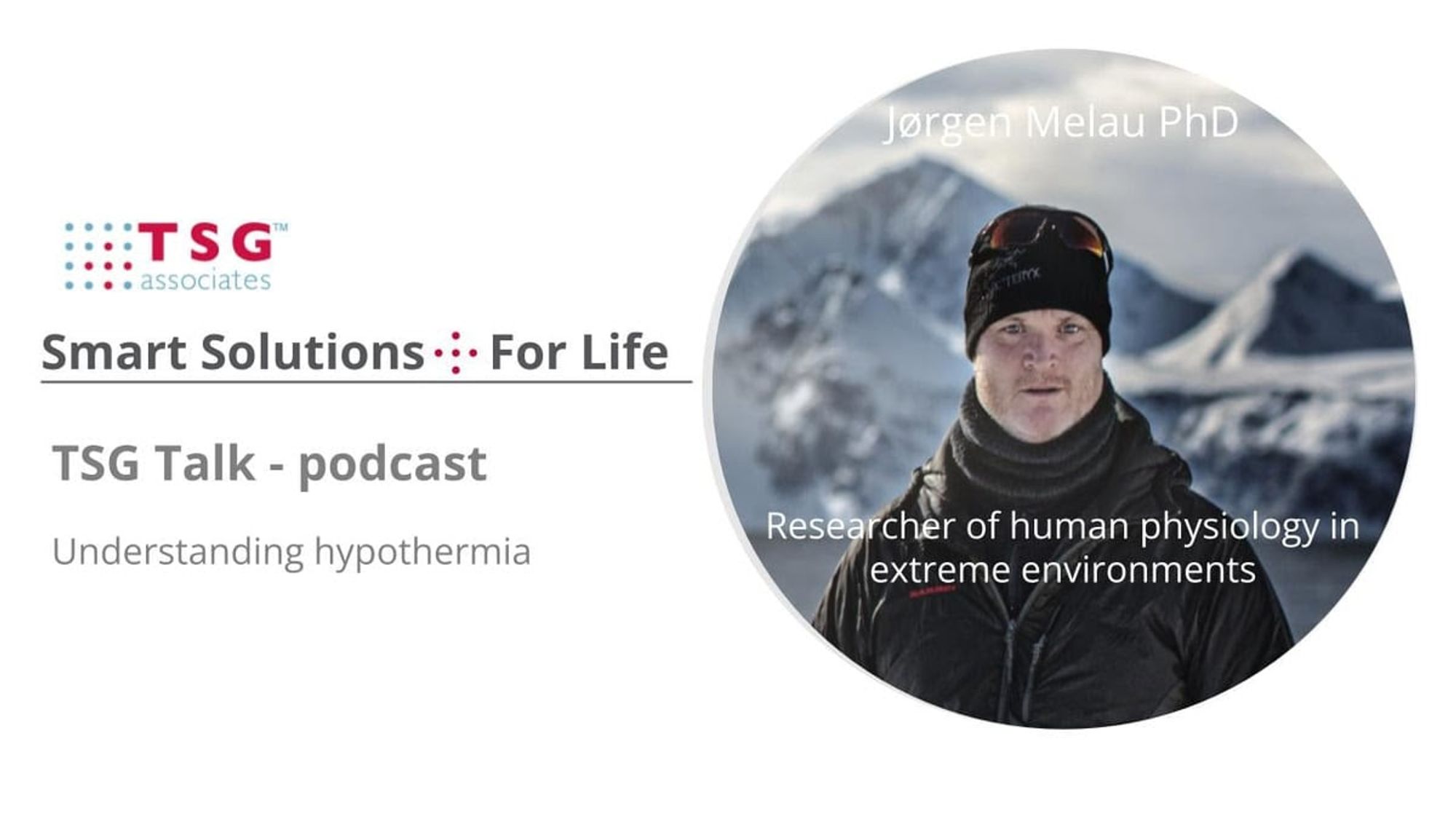


01/04/2024
TSG Talk- Understanding hypothermia
In one of our recent episodes, Senior Partner Colin Smart welcomed Jorgen Melau, PhD, to explore the critical domain of hypothermia prevention and management. Jorgen highlighted his findings from his extensive research, challenging the efficacy of foil-type systems in addressing hypothermia. Furthermore, he introduced innovative techniques for more accurate temperature measurement, offering invaluable insights into advancing the approach to combating hypothermia.

Jorgen’s background
Jorgen began by explaining his background as a trained nurse.
“I am a trained nurse, specialised in anaesthesiology. I have worked almost all my career pre-hospital, some in the armed forces and some in the ambulance services. Then I worked ten years in the air ambulance in the northern part of Norway in the Arctic as a rescue paramedic. For the last few years, I've been doing a PhD in physiology, specifically in temperature physiology. I have also been the chief of the medical and safety teams at the Norseman Extreme Triathlon. The race is well known for its rough terrain and the cold weather, so I basically started my PhD to see if it was safe to swim in cold waters because they have a lot of cold waters at the race.”
He continued discussing his link to the armed forces.
“During my PhD studies, the Norwegian Armed Forces showed interest; I did a few studies with the Norwegian Naval Special Forces, which have an interest in cold waters. My PhD is now finished, and I work in the Norwegian Armed Forces as a researcher in the Cold Weather Research Group. One of my interests is hypothermia research and how we can improve our care for patients in the cold and treat hypothermia pre-hospital. I think my strong side as a researcher is that I have a lot of practical experience. I've been out there both as a rescuer in the Arctic and also from my former military work.”
Reflective foil
Jorgen then stated his reasons why reflective foil should not be used for Hypothermia.
“I have been talking against the use of reflective foils for several years. On LinkedIn, I've had a few posts about why we should not use reflective foils, and I get huge responses on posts like that. I could talk for hours about only the reflective foils, but I will try to be short and precise. Reflected foil does not have any insulation, which is a very important factor. It does not protect against conductive heat loss; it doesn't prevent heat loss to the ground. It claims that it will reflect heat due to radiation. In layman's terms, this is the heat from the patient that will be reflected back to the patient when hitting the reflecting foil. But the thing is that a hypothermic patient does not radiate much heat at all, so that is a statement that both scientifically and practically is very easy to say that it's not correct. It's very hard to wrap in a way that prevents evaporation from the patient because it's very hard to get it tight and prevent evaporation. And the same with the convective heat loss. It's very, very hard to prevent using a reflective foil, not to mention the practical ways that you have to know when you're standing in the mountains with a hypothermic patient. It is never good weather, it's always bad weather, it's raining, and it's always snowing, and it's windy, and it's very, very hard to use. There are claims that you can use it like an improvised tourniquets and that might be correct. But its main use is supposed to be hyperthermia prevention and I don't think it's very good for that. Many people say it's probably better than having nothing at all. That also might be true, but my main concern is actually if people have the foil, they think that they are all set to prevent hypothermia.”
Hypothermia advice
Jorgen then described the importance of a good hypothermia kit.
“Well, I would say prepare a good kit that includes gear for hypothermia management, and you can use pre-made solutions. Many are very good, but you can also use many of the things you already have, like a sleeping bag. I think the important thing regarding the gear and kits you want to use is that there is actually no kit that fits all. You have to adapt to your specific needs and your mission. And very often, you cannot carry all you want, so prioritise weight and the benefit of the kit. If you are a volunteer on a rescue vessel then you probably can have a lot of gear with you. But if you're jumping parachuting out of an aeroplane, you can't have the same amount of kit.”
He then explained his experimental process of using a household thermometer to measure patient temperature.
“One of the hard things to do in pre-hospital management of hypothermia is the actual temperature measuring and how we should measure core temperature. That sounds very easy but it's not. One of the things I've been experimenting with is to use a normal household thermometer, one that has an indoor and an outdoor sensor. The outdoor sensor is through a wire, and then you use the outer sensor and put it in the armpit of the patient and then you wrap the indoor sensor on the outside of your hyperthermia wrap like the burrito wrap. And the thing is that it's actually pretty accurate. I've done several tests comparing it with validated temperature-measuring instruments. So, I encourage people to do some experimenting with this.”
Jorgen finished by specifying the link between hypothermia and the cold.
“Remember that your sick patient can get very cold even if you are warm yourself. I would say it's a good way to remember it, and that it is a daily occurrence in prehospital medicine that people get hypothermic even when it's rather warm outside.”
What's the one piece of medical equipment you would never be without?
Jorgen finished by explaining why a portable ultrasound was his equipment of choice.
“I would probably say a portable ultrasound, I am not that experienced with ultrasound myself yet but I have used it a bit. There is huge potential for its use in pre-hospital medicine.”
Find out more
Click here to listen to the full TSG Talk episode with Jorgen Melau PhD, to find out more about our life-saving solutions, please call TSG Associates on 01422 557841 or email the team at info@tsgassociates


.png)






